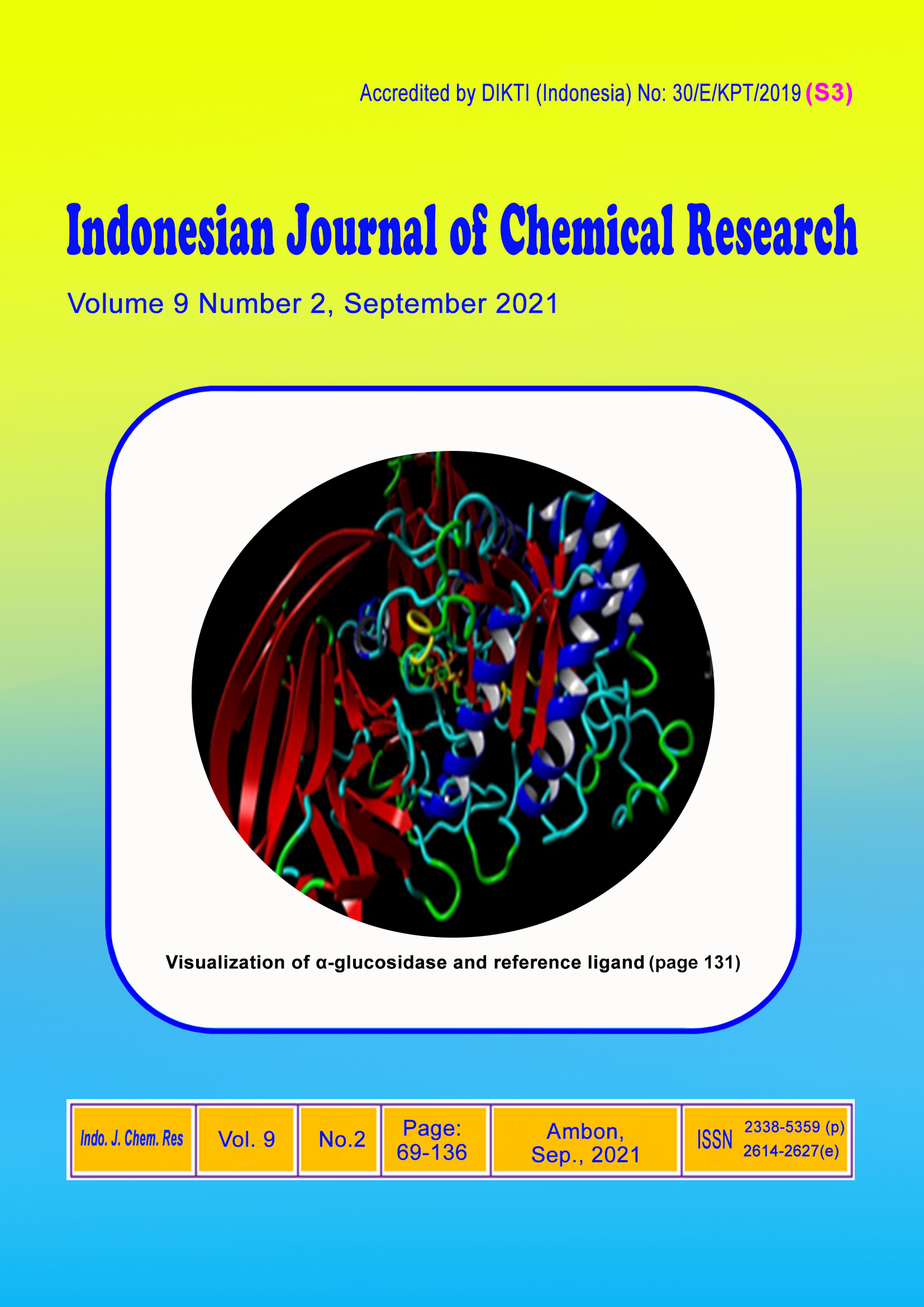Development of Differential Pulse Anodic Stripping Voltammetry Technique for Cadmium(II) Detection and Its Application in Water Spinach
Abstract
Cadmium is a toxic pollutant that is harmful to the environment and humans. The purpose of this research was to develop a method for cadmium(II) detection using differential pulse anodic stripping voltammetry (DPASV) using a glassy carbon electrode. The developed method was then applied for cadmium detection in the vegetable samples which is water spinach. The developed method was optimized in several parameters such as potential window, deposition potential, deposition time, and scan rate. The developed method for cadmium(II) detection was also investigated in its analytical performance includes linearity, precision, detection limit, and quantitation limit. The optimum conditions for cadmium(II) detection in 0.1 M KCl using DPASV technique obtained such as potential window from -1200 to -100 mV, deposition potential of -1100 mV (vs Ag/AgCl), and deposition time of 360 s. It was obtained good linearity for cadmium(II) detection using the DPASV technique with an R2 of 0.996. The precision was expressed as %SBR with 0.66%. The detection and quantitation limits for cadmium(II) detection were 0.4206 µM~0.0771 ppm and 0.5525 µM~0.1013 ppm, respectively. The developed method was then applied for cadmium(II) measurement in the water spinach sample and the obtained cadmium(II) concentration in water spinach was 0.2399 mg/Kg.
Downloads
Copyright (c) 2021 Budi Riza Putra, Manggar Arum Aristri, Eti Rohaeti, Wulan Tri Wahyuni

This work is licensed under a Creative Commons Attribution-NonCommercial-NoDerivatives 4.0 International License.
Authors who publish with this journal agree to the following terms:
- Copyright on any article is retained by the author(s).
- The author grants the journal, the right of first publication with the work simultaneously licensed under a Creative Commons Attribution License that allows others to share the work with an acknowledgment of the work’s authorship and initial publication in this journal.
- Authors are able to enter into separate, additional contractual arrangements for the non-exclusive distribution of the journal’s published version of the work (e.g., post it to an institutional repository or publish it in a book), with an acknowledgment of its initial publication in this journal.
- Authors are permitted and encouraged to post their work online (e.g., in institutional repositories or on their website) prior to and during the submission process, as it can lead to productive exchanges, as well as earlier and greater citation of published work.
- The article and any associated published material is distributed under the Creative Commons Attribution-NonCommercial-NoDerivatives 4.0 International License.






_copy1.png)










